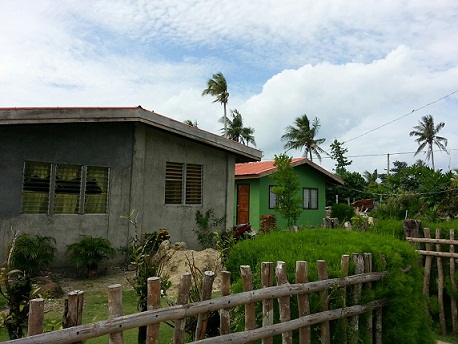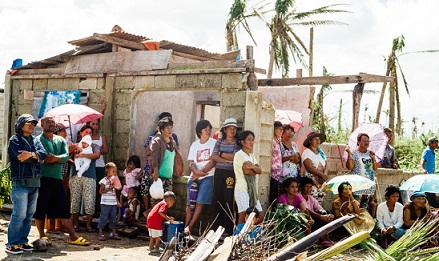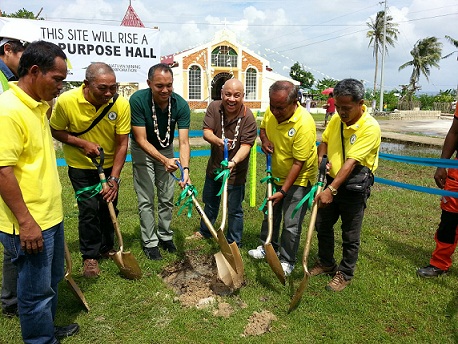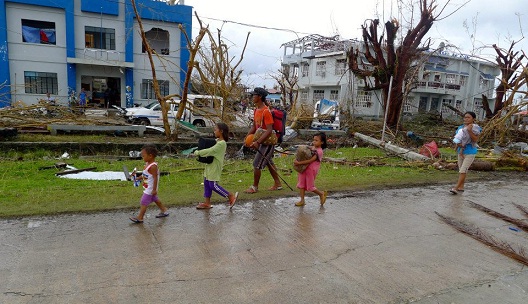
Manicani today. Two of the more than 400 houses built by Nickel Asia Corporation for victims of Yolanda.
After four hours of howling, spine-tingling winds, only buildings and houses remained with roofs. Electric posts were toppled. Trees were uprooted. The sturdy coconut trees looked beaten with leaves dangling from the top.
Of the more than 47,000 population of Guiuan, more than two thousand were injured. A hundred perished.
Yolanda went on to inflict greater damage in the adjoining town of Leyte. Survivors said there is no exact number of those who died but definitely higher than the 6,000 the Aquino government wants to believe. They said if one totals the unidentified bodies buried in several mass graves, Yolanda claimed more than 15,000 lives.
One year after, gloom is still palpable in Tacloban, the capital of Leyte, although the residents have resumed their lives and are struggling to move on.But it is not in Tacloban that President Aquino will be marking the first year of the tragedy.
It is here in Guiuan that President Aquino will report to the nation on how his government managed the worst disaster to have happened in this generation’s living memory.
Presidential Communications Operations Office Secretary Herminio Coloma Jr. said the President will turn over housing units to the families displaced by the typhoon that destroyed almost everything standing.
Coloma said, “The President would no longer go to Tacloban City in Leyte where most people were killed during the height of the typhoon.”

Survivors gather for a launching of rehabilitation of Manicani with the help of Nickel Asia Corporation. Feb. 2014.
Guiuan is a good example of of “resilience” as defined by the United Nations Development Programme which is “the capacity to recover quickly from a difficult situation such as disasters.”
The other element of resilience which is “the ability to adapt quickly to changing situations such as a changing climate” remains to seen but under the competent leadership of its hardworking mayor, Christopher “Sheen” Gonzales, private sector and the international community, are positive about Guiuan’s ability to rise from the traumatic experience.
That was noted by Undersecretary Danilo Antonio of the Office of the Presidential Assistant for Rehabilitation and Recovery when he guested at the turnover of more than 400 houses built by Nickel Asia Corporation to Yolanda victims in the island of Manicani, part of Guiuan, last Wednesday.

NAC’s Dennis Zamora and PARR Undersecretary Danilo Antonio are joined by the barangay captains for the ceremonial groundbreaking for Manicani’s multi-purpose hall.
Last February,three months after Yolanda struck, Nickel Asia Corporation, which owns a non-operating mine in the island, started building the more than 400 houses for Manicani residents.
“This is just a start,” said Dennis Zamora, NAC senior vice president for marketing, who led the turnover of the houses , adding that working together, there are more things that they could accomplish.
Aquino should see how Manicani is bouncing back. It is something that he can tell the world about.



